Editor’s note: This post was updated by Dillon on March 1, 2019. The original post was published on January 30, 2012 by Dave Lee.
It’s safe to say that indulging in new flavors and pampering your palate is one of the most exciting aspects of travel. Diving into foods with names you can hardly pronounce, tasting new spices that make your eyebrows raise, and potentially feeling the after-effects on your stomach — it’s all part of the process, and culinary tourists wouldn’t have it any other way.
For one reason or another, Colombian food doesn’t normally top the lists of internationally renowned cuisines, and many people would be hard-pressed to name one traditional Colombian dish.
We’re here to shatter some stereotypes. Believe it or not, Colombia is jam-packed with foods ranging from hearty and salty to sweet, gooey, and cheesy. Built on a foundation of European and indigenous influences including meat, potatoes, beans, corn, and rice, Colombian cuisine is known for its stomach-filling staples — but don’t be surprised if you get blindsided by a new flavor.
There are tons of sayings surrounding food in Colombia, but a popular one goes as follows: Desayunar como un rey, almorzar como un príncipe, y comer como un mendigo. “Eat breakfast like a king, eat lunch like a prince, and eat dinner like a beggar.” In other words, breakfast and lunch tend to be the main meals of the day, whereas dinner tends to be more of a snack.
Without further adieu, let’s dive into the 10 traditional dishes to try when visiting Colombia.
1. Arepa
Let’s jump straight to the point — there is nothing more Colombian than the arepa. A circular bread made from fresh cornmeal, arepas are the foundations of many meals, and often times they’re eaten alone.
Toppings can range from simply butter and cheese to heaping piles of meat and vegetables, so they’re as versatile as they are delicious. Anyone visiting Colombia will surely be an arepa expert by trip’s end.

2. Bandeja Paisa
Colombia’s national dish, without a doubt, is the bandeja paisa. Reigning from the Antioquia region (where Medellín is located, and where natives are referred to as paisas), the bandeja paisa is a feast that is not for the faint-hearted.
On one plate you’ll normally find steak, ground beef, chicharrones, rice, beans, an egg, avocado, an arepa, and plantains. We repeat: on one plate. There are a few different variations (and often it’s a point of dispute among Colombian culinary hardliners), but the bottom line is that it’s an extremely delicious and hearty plate that will leave you in a serious food coma.
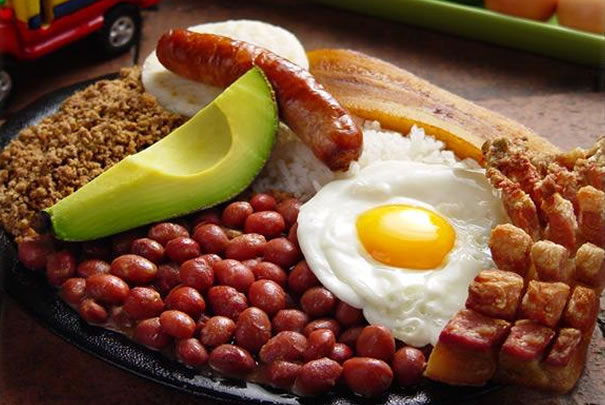
3. Sancocho
Sancocho is hearty stew that’s popular all throughout South America with a few regional variations. As far as ingredients go, the Colombian sancocho usually includes everything except the kitchen sink. Jokes aside, you’ll often find a sancocho with a few different kinds of meat, plantains, potatoes, corn, and yucca. It’s also served with a side of white rice and a few slices of avocado.
Sancocho is an integral part of Colombian culture. It’s normal for families to gather over the weekends and have a sancocho, which is best compared to the kind of backyard barbecue you may find in other countries. If you see plumes of smoke rising from the trees, chances are it’s just a sancocho cookout and not a serious fire danger.
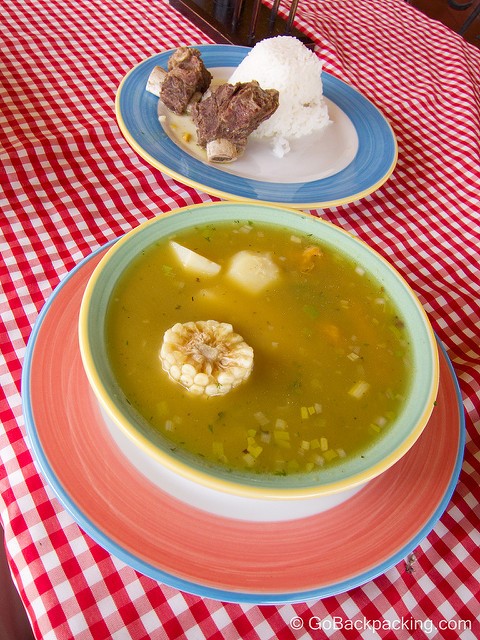
Sancocho (photo: David Lee)
4. Empanadas
Empanadas are Colombia’s de facto street food. Found on virtually every street corner, these deep-fried pockets of goodness are a perfect quick breakfast or late night snack. Derived from the Spanish word empanar, which means to wrap or coat in bread, empanadas are essentially small, fist-sized foods packed with any number of ingredients.
Depending on where you are in Colombia, you can find empanadas filled with chorizo, beef, chicken, or cheese and spinach in the more vulnerable communities.
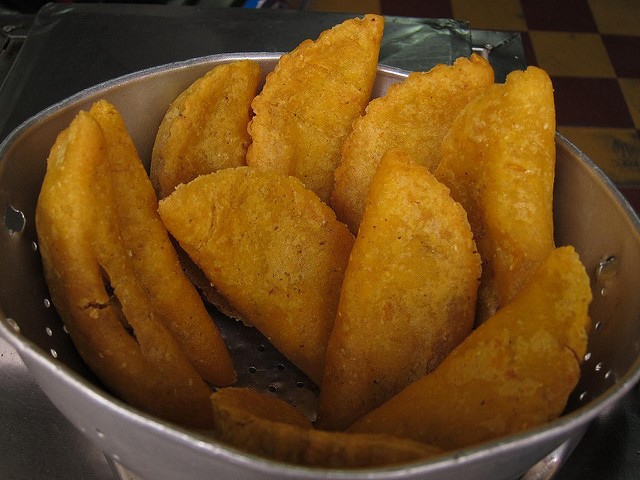
5. Menú del Día
While a menú del día isn’t a specific dish per sé, the “meal of the day” is the most commonly found lunch item throughout the country. For a very discounted rate (usually anywhere from 8,000 COP to 15,000 COP, or $2.50 to $4.50 USD), you are served soup appetizer, a fresh juice, and the main course meal.
The soups are usually either beans, tomato soup, or some kind of creamy vegetable. The main courses include one kind of protein, a portion of rice, a plantain, and a tiny little dollop of lettuce, which can barely be considered a salad (vegetables aren’t a priority in Colombia). The most common juice in Colombia is guarapo, which is their take on lemonade made with panela, or sugar cane.
6. Buñuelos
Another popular street food and an unmissable staple during the holiday months of November and December, buñuelos can best be described as fried dough balls that are somehow simultaneously sweet and savory. You can find some filled with cheese, but the Colombian version is fairly plain and sprinkled with powdered sugar.
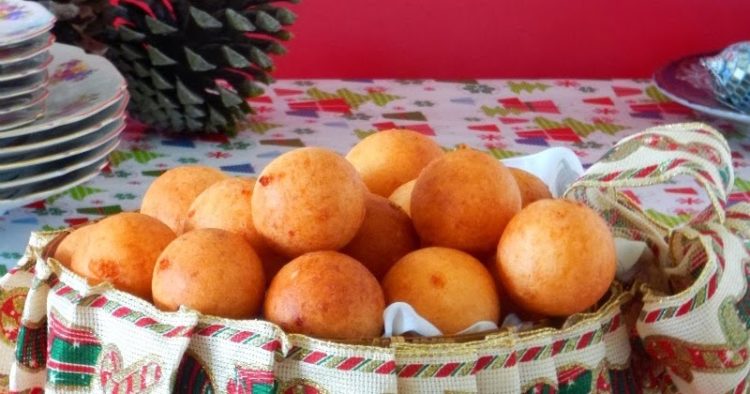
7. Mondongo Soup
Popular all over the Caribbean and Latin America, Mondongo is a filling soup made from tripe, or the stomach lining of a cow or pig. While it’s often served as the small appetizer soup in your classic menú del día, it’s also a stand-alone dish that can be extremely filling.
In Colombia, mondongo is made with tons of cilantro and vegetables such as peas, carrots, and onion with a base of the chicken stock.
8. Lechona
Originating from the Tolima region just west of Bogotá, Lechona is another wonderful staple in Colombian cuisine. However, those with sensitive stomachs should beware — this dish consists of an entire pig (face and all) stuffed with rice, onions, peas, and spices. It’s then tossed in a clay oven for up to 12 hours, and voila, you have an entire roasted pig sitting on your dining room table.
9. Ajiaco
Alongside mondongo and sancocho, Ajiaco is one of the emblematic stews of Colombia. With ingredients like chicken, two or three types of potatoes, corn, capers, avocado, and sour cream, you’re bound to end up full and satisfied.
The most telling ingredient that separates a Colombian Ajiaco from others in Spain, Cuba, and Peru, is the guasca, which is an herb commonly considered to be a weed in other countries throughout North America.
To be clear — Ajiaco has a very distinct, almost acquired taste. Whether you like it or not, you’ll definitely be able to tell it’s ajiaco!
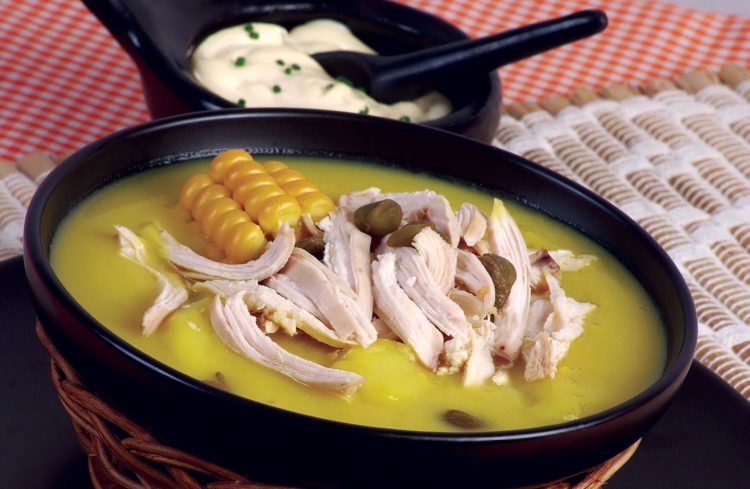
10. Cazuela de Mariscos
With coastlines along the Caribbean and the Pacific Ocean, you’d imagine that Colombia knows a thing or two about seafood cuisine. For your first foray into Colombia’s seafood, we highly recommend a cazuela de mariscos.
The cazuela de mariscos is a thick, hearty soup that can include lobster, shrimp, white fish, and vegetables, all bathed in a broth of creamy coconut milk. It’s considered to be an aphrodisiac, but we’ll leave it up to you to see if the facts hold true.
Special Streetfood Shoutout: Mango Biche
We couldn’t leave you hanging without mango biche. Forget everything you know about mango, and dive into one of the most commonly available street foods in Colombia.
Mango biche is essentially just unripe mango. It’s naturally green, and it’s doused with salt, pepper, and lime. It is very possible that your first bite of mango biche may have you blaspheming the fruit gods, but we promise it will grow on you. It’s sour, salty, and incredibly refreshing.
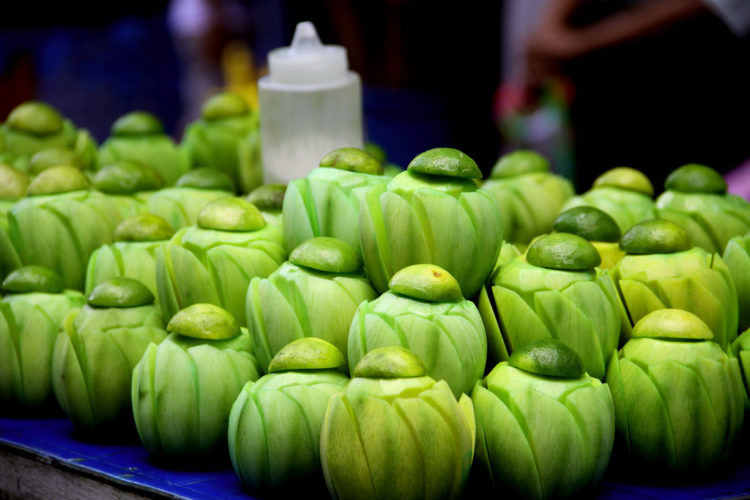
If you want to visit Medellin and are looking for cheap flights click here!

About the author: Dillon is a travel-hungry outdoor enthusiast originally from Encinitas, California. He’s been to 26 countries, traveled around the world on a boat, lived in a tent in the woods for 6 months, and currently lives in Medellín, Colombia. Besides writing, Dillon can be found playing soccer, drumming, cooking, and doing his best impression of a salsa dance.

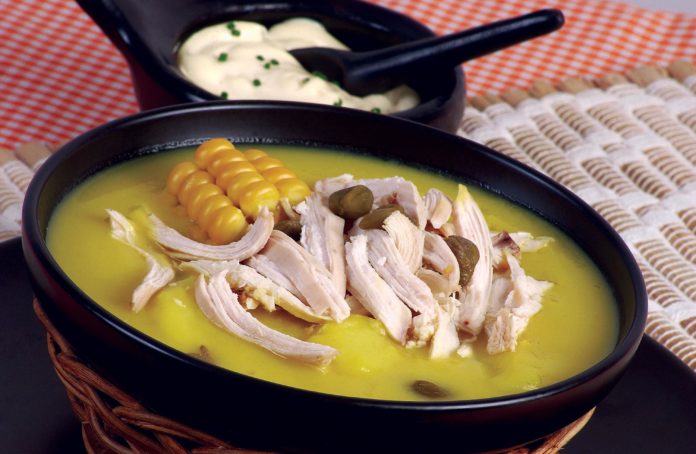



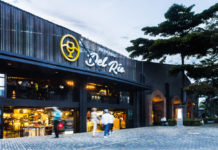







What an excellent post, Dave, you really didn’t miss anything and I can say you sum everything up.
First of all, great blog! Then I also have a question that I guess you’ve gotten a million times before, but how dangerous is Medellin in reality? I’m thinking about moving there for a while but I dont wanna go home in a body bag…
Obviously there are risks but how big are they compared to the rest of south america?
Thank you!
Hey Ben, I like to say that Medellin and Colombia are no more dangerous than any other country in South America, though I’ve so far only been to Ecuador and Peru. I felt less safe in Ecuador than Colombia, and more safe in Peru. I hear Chile is especially safe. And right now Venezuela is especially dangerous.
I spend a lot of time sharing the highlights of living in Medellin, but there are downsides too, just as in any country. You may want to read this post, and especially the comments that have since been left. http://medellinliving.com/robbed-in-medellin-colombia/
Regardless of the bad stories, I have a ton of friends living there right this minute, all of whom had spent time there in prior years as well.
A great post that coincided with a visit to an authentic Colombian cafe in Brixton, South London. I had Frijoles. Chicharron, arepa, rice and platano – so I am anticipating my 2 months + in Medellin with literal relish. Here is the facebook reference for returning travellers who want to re live their visit to Colombia with authentic food. 42 days and counting!
http://www.facebook.com/pages/El-Rancho-De-Lalo/156815314336773?sk=wall
Okay, thanks for the answer. It’s really hard to know what the city is like because everybody is saying different things about the security, but it seems like a nice place to live for a couple of months so maybe I end up there. If not I’m thinking about Chile or Argentina instead.
I liked arepas and empanads. But where is Cuy on this list? 🙂
As far as I know, cuy isn’t eaten in Colombia. I had it several times in Ecuador, and it’s also available in Peru.
yes, it is eaten, especially in Pasto and surrounds, but also in other areas. my family is from a “vereda” near Ubaté, Cundinamarca, and they used to raise cuyes. it’s possible some people in the region does it.
as for breakfast, I haven’t had calentado for breakfast in years, also, I didn’t know having churros for breakfast was popular. I live in Zipaquirá (cund). and my breakfast consists of hot chocolate, bread and eggs, maybe fruits. once in a while caldo de papa. some people have coffee or aguadepanela instead of chocolate.
This looks good but how long does it take to cook Lechona? And can you send me the recipe please?
The problem with lechona is that it requires a whole pig to make, and it takes about 8 hours of slow cooking in a brick oven to make. However, there are some “homemade” recipes that you could try out. This one looks like a winner: http://www.mycolombianrecipes.com/lechona-tolimense-colombian-style-stuffed-pork
You are probably right, i havent tried it but saw it selleing on the South near Ipiales.
My favorite isn’t on the list! Arepas de chocolo, which i guess falls under arepas as well.
A trip to any supermarket makes it abundantly clear just how many types of arepas you can find here. I like arepas de chocolo too.
What about salpicón? A little something to balance out all that meat and carbs.
What about patacones con hogao? 🙂 Delicious!
We have just arrived in Medellin! I have tried the arepas, but there are some interesting things on this list that I must explore! I love the sugarcane juice they serve here.
For the last one why is it a bug in the food ?
awesome foods right
I lived in Medellin for little over a year, though it’s been many years ago now. Absolutely loved it! The food, people, landscape…wonderful.
My fav foods that I miss SO much have to be:
Arepas de maiíz con queso
Frijoles y arroz
Empanadas
Platanos
Fresh baked pan
Various fruits (Guava, etc)
buñuelos is in the top 3 yet not in your list
Good post! However,I’ve never seen anyone having Churros for breakfast in Colombia (and I’m Colombian) – that’s more like a Spanish tradition (in Spain), you can find them in Colombia as street food, like in festivals and it’s mostly had as a dessert. Colombians don’t eat sweet stuff for breakfast (more than hot chocolate as a drink).
I’d include the Picada instead, which is more typical and very different from the Fritanga Bogotana.
Also agree with Jay on the buñuelos! 🙂
This is a great blog and lots of valuable information to be found. Although I don’t eat meat it would be nice to see a dish from the Caribbean on the list in the future.
Informative Article! Would like to have had the phonetic pronunciations provided.
Thanks for your comment and the idea. We’ll keep it in mind next time.
so are all the foods here form colombia?
this is amazing like the empanadas
Are there any more foods from Colombia that u have. if not please tell me. and if so please send me pictures and the names of each food. thanku
Thank you so much dave! great website, you helped me get a A+ on a project about Colombian dishes. This helped me a lot! Thanks again
What about tamales??? They are delicious used for any acassion from breakfast to onces with chocolate an cheese. Jam jam!!! Deliciosos….
So I’m cooking sliders for a party and people are sending in recommendations for an international flavor. What would s Colombian slider look like in your opinion?
Normal slider, onions, thin slices of chorizo and a few kernels of sweet corn
In Cali . Normally eat bunuelo or pandeono with cafe con leche or chocolate con leche. On the weekends calentado.
Thanks Dave!
great post, how delicious is it ?
Nice information about Colombia !
Hi Dillion
I’ve been proposed to be part of a restaurant adventure in Medellin. Would it be possible to contact you?
Kind regards
Hi Ardavan, you can send an email to info@medellinliving.com with your proposal.Cheers!
Thank you for the information. I am planning on going to Medellin by the end of August staying for 2 weeks. I been in some of South America countries . I am a good cook as hoppy but sure these delicious dishes you mentioned are yummy. I will try them all. Thanks again.
These dishes are amazing and deciduous and some-what health too me and my family and friends and i would love if there where more dishes on this website for me and my family can cook and eat and even shared with other people as well.